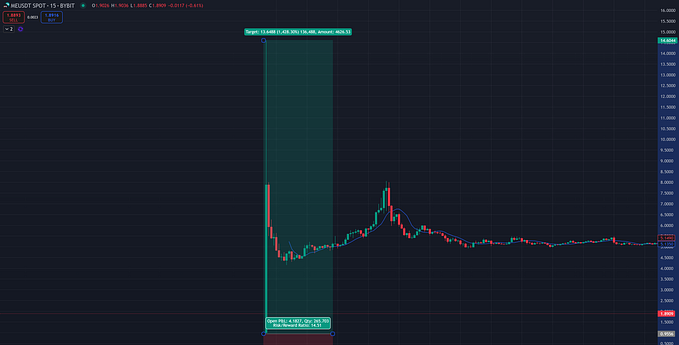
Overview
Wormhole is excited to put forth its proposal to enable the cross-chain expansion of the HUMAN Routing Protocol.
Before that, a quick intro to Wormhole — Wormhole is a leading cross-chain interoperability protocol, allowing generic messaging over 19 heterogenous blockchains, and 7 different runtimes across EVM, Move VM, Solana, Cosmos etc, and soon to be many more.
Since launch on mainnet in August 2021, 30 million messages have been transmitted, with 2 million messages being generated a day between asset transfers and messaging. The sheer load of messages that Wormhole processes in a 24-hour period is comparable to an L1 and signals its high reliability.
HUMAN Routing Protocol is an important coordination layer, enabling a decentralized network of actors to trustlessly collaborate. We propose that Wormhole is well-suited to enable cross-chain access to $HMT and governance participation/voting — which are essential coordination elements of the protocol.
Wormhole is aligned with the HUMAN protocol’s vision and believes that the community has a few strong reasons to build the Routing Protocol:
- Facilitate a multi-chain/multi-service approach where HUMAN users can choose the optimal network and operators to suit their needs.
- Improve operator discovery and consensus mechanism robustness between HUMAN actors, as well as increased protocol security through operator staking and slashing.
- Introduce on-chain governance module to further HUMAN decentralization and spur community contribution.
Design
To enable cross-chain HMT, the Routing Protocol can leverage the Wormhole SDK to quickly enable users to bridge HMT from Ethereum to any of the 19 chains that Wormhole connects to. Alternatively, governance can decide to integrate directly with the Token Bridge contracts, enabling HMT bridging from the contract level.
On the cross-chain governance side of things, we build off of the initial governance design (seen below) and expand it cross-chain, enabling users to vote from any chain that the Routing Protocol supports.

In the cross-chain version, we treat Ethereum as the Governance Hub, responsible for keeping track of proposals and tallying votes. Each chain that the Routing Protocol supports acts as a Governance Spoke, where users can vote and later submit proposals themselves. In the first stage of decentralization, the Metahuman team and advisory board will submit proposals off-chain to the Magistrate, which will then evaluate and submit proposals on-chain to the Governance Hub Contracts. In the second stage, HMT token holders can also submit proposals to the Magistrate. In both stages, all proposals are submitted to the Governance Hub while users can vote from the Hub or any Governance Spoke.
Wormhole enables cross-chain voting through its core generic-messaging layer as follows:
- User submits a vote on a Governance Spoke for a particular proposal id, sending a message through Wormhole to the Governance Hub.
- The Governance Hub then reads this message and updates the total (yes/no) vote count for the specified proposal.
In the second stage of decentralization, HMT token holders can also attest that they have sufficient voting power (at least 1% of total voting power) to make proposals on a Governance Spoke. This will function similarly to the cross-chain voting, sending a message to the Governance Hub to track the proposer’s HMT balance.

Decentralization and Security
Wormhole relies on a PoA consensus with 19 guardians. Each Guardian is a fully independent entity with broad and deep interests in the crypto community. Each runs its own node for each chain and holds equal weight in governance and voting. Of the 19 guardians, Wormhole requires more than two-thirds to reach consensus and pass verification — thus, we assume that at least one-third of our guardian set is honest.
Our guardian set is comprised of the leading PoS validators with billions in active delegations across the biggest PoS chains — P2P, Chorus One, Everstake, Staked.us to name a few.
Wormhole’s current architecture is optimized for safety and viability. However, Wormhole continues to invest heavily in upgrading its trust assumptions as new technology becomes safe and viable. A few items to note are 1) expansion of the 19 Guardian set and 2) the application of ZK tech to enable a fully trustless design whereby each chain generates a state proof that the destination chain accepts. Should ZKs be enabled in Wormhole, they’ll facilitate the ability for Wormhole to scale to new networks quickly as they will no longer require guardians to run full nodes.
In just the last 30-days alone, Wormhole has transmitted over 27.5M messages. Wormhole has handled some of the recent volatile periods in DeFi with ease, facilitating 2M messages in just one day. Our tried and tested permissionless protocol has gained the trust of some of the most reputable developers in the space.
Wormhole leads the industry in commitment to security. It has the most generous bug bounty program in crypto, which has been defined on both, Immunefi and Wormhole’s website. Additionally, Wormhole has been audited 14 times by multiple firms (e.g., Trail of Bots, Noedyme, Kudelski, Ottersec) with more underway. Wormhole will continue along both of these fronts so as to uphold high standards of security for its users and protocols across supported ecosystems.









